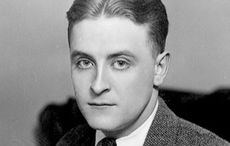I was posted as a diplomat to New York in the early 1990s to be Vice Consul of Ireland at the Irish Consulate and I had to attend many Irish events, sometimes, three or four in one weekend.
It was a fascinating experience, an intimate exposure to the social fabric of Irish America and to urban America generally, which I couldn’t have got otherwise and which I subsequently described with affection and humour in a best-selling book entitled ‘An Accidental Diplomat’ (2001).
Meanwhile, my colleagues at the Irish Consulates in Boston, Chicago, San Francisco and the Embassy in Washington were doing similar work. ‘We dined for Ireland,’ was the quip, and we all became fancy footwork experts on the "Siege of Ennis" and the "Stack of Barley."
This was also a crucial way for the Irish Government to retain its link to the Irish community, and to Irish America, and thus particularly valuable as a two way process.
However, the relationship was not without difficulty, mainly because Irish American opinion is much stronger and more nationalist on Irish issues, specifically Northern Ireland, than the approach of the Irish Government – any Irish Government.
This has always been the case, and in the 1940s and 50s Irish politicians were fearful of visiting Irish America for fear of getting an earful about not doing enough on Northern Ireland! Of course, in an earlier period, from 1910 to 1920, Irish politicians were very keen to use this radical Irish American opinion to support the cause at home.
The eruption of the Northern Irish conflict in 1969, accentuated this tension. The world watched as Catholics were burnt out of their homes in Belfast and civil rights marchers were batoned off the Ulster streets.
There was outrage in Irish circles in the US that more was not being done. One must remember that modern Irish America is in many ways a creation of the massive influx of more than one million Irish immigrants after the Great Famine of 1845-48 many of whom were carrying a great bitterness at the consequences of British rule and misrule in Ireland. Add to this, an influx after the Irish Civil War of the 1920's and you have an ethnic community with a very real grievance about how their former ‘home country’ has been treated.
The Irish Government had always taken a strong line with the IRA, but by the 1980s, it was also taking a strong line with US organisations and opinion which supported the IRA, and especially with the Irish Northern Aid organization (Noraid), which was seen as the Republican support arm in the US.
As the hunger strike in Northern Ireland exacerbated the situation, these tensions worsened and many Irish American associations simply stopped inviting Irish Government diplomats to their dinner dances and social events.
However, the Irish Government was also excusing itself, given the open support for IRA actions often expressed at these Irish American events. It felt that it had to draw a clear line between the democratic Irish State and nation, and the often murderous deeds done in its name, by an organisation, which was, as Dublin saw it, too often given succour by a sometimes credulous and ignorant American public – for Irish American opinion, also influenced mainstream American opinion.
The low point came with the honoring of the elderly Michael Flannery, a known IRA gun-runner, as Grand Marshal of the St Patrick’s Day Parade in New York in 1983, a stunt which caused the Irish Government to completely shun the event. The boycott created great controversy and a lot of hurt in a community which didn’t understand why it couldn’t honor both ‘freedom fighters’ and the Irish Government.
Some of the media in Ireland ridiculed this obsessive policy of boycotting events that had any link to the IRA and mocked the way Irish Ministers and diplomats would step off platforms, for a so-called ‘constitutional leak,’ when Noraid banners passed by!
But many Irish Americans, tired of the often simplistic and ignorant attitude to Northern Ireland in their community and the damaging association with the IRA, also welcomed this strict policy.
By the early 1990s, indeed, the Irish Government had won back most of this community, and was once again attending dinner dances and events of Irish America, including even the functions the New York Police department, once a hardcore bed of Noraid support – a fact that is hard to comprehend now, in the post 9/11 era.
Some of the dinner dances I attended were the first ones attended in decades by a representative of the Irish Government. And they were not without tension. Indeed, one could be almost physically attacked by nationalist die-hards at these events.
On one occasion at the Limerick County Association of NY dinner dance I was on a platform with the late Labour TD Jim Kemmy when some abusive hecklers came towards us shouting about ‘Free state traitors.’ Kemmy was unmoved. 'Stand your ground,' he said, 'these people are in a time warp!'
On another occasion, I had just left the stage of the Longford Association dinner dance, when a mystery guest was introduced – it was Gerry McGeough, not a Noraid supporter, but an actual IRA man on the run! McGeough was wanted in Europe for IRA activities and in the US.
As it happens, we became friendly decades later. McGeough created a conservative magazine called The Hibernian and in 2007, he was arrested for a 1980s offence – in my opinion harshly. However, in 1991, when McGeough was rolled out at a New York dinner dance, I was furious and a major row ensued before we accepted that the guest was sprung on the event and was not authorized by the organizing committee.
Such was the fluid and multifaceted nature of the community that you didn’t know when an awkward moment might occur. On another occasion, my fellow diplomat and some other worthies were attending the Philadelphia St Patrick’s Day Parade when they heard an upcoming group doing the then ubiquitous World Cup chant 'Ooh Ahh Paul McGrath' Say, Ooh Ahh Paul McGrath!' They came off the reviewing platform and joined in, only to realise too late that the chant was actually 'Oo ah, up the Ra !' ( ie the IRA). And they quickly shuffled back out again!
On another occasion, my colleagues had to abruptly leave the reviewing platform of the St Patrick’s Day Parade in San Francisco when two black limousines appeared in the parade with white nameplates honouring two recent IRA escapees from Brixton prison in London. It might have seemed a petty departure, but the diplomats couldn’t be seen to be supporting or condoning this dubious honor, especially as the men had been convicted of conspiring to cause explosions in the UK.
Such moments seem might comic now, but at the time they represented the gulf in attitudes between the Irish government and elements in Irish America regarding the violence going on back in Ireland, and the struggle for public opinion about it. It was a struggle which went on for decades and, of course, finally ended in the 1990s with the modern peace process and the IRA ceasefire. Ironically, of course, this was a process which would not have happened without major and crucial US involvement, often reflecting the very opinion that the Irish Government had once tried to counter.
But by this time, the different elements of opinion had learned to work together on Northern Ireland, both at the senior political level and at a community level. This meant that junior diplomats such as I was myself could happily go back to dancing the "Siege of Ennis" without worrying about an IRA supporter appearing at their shoulder.




Comments